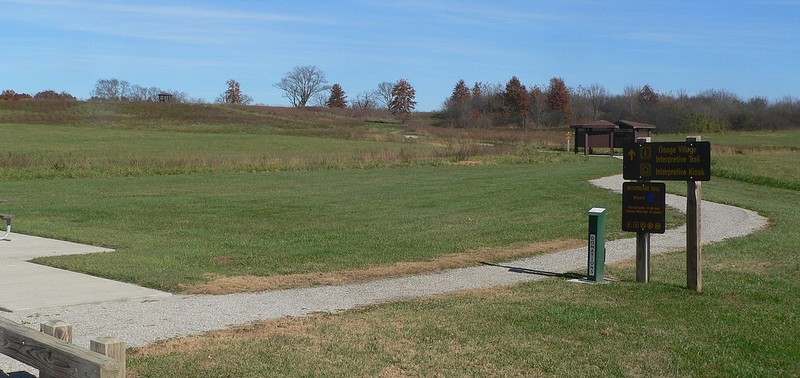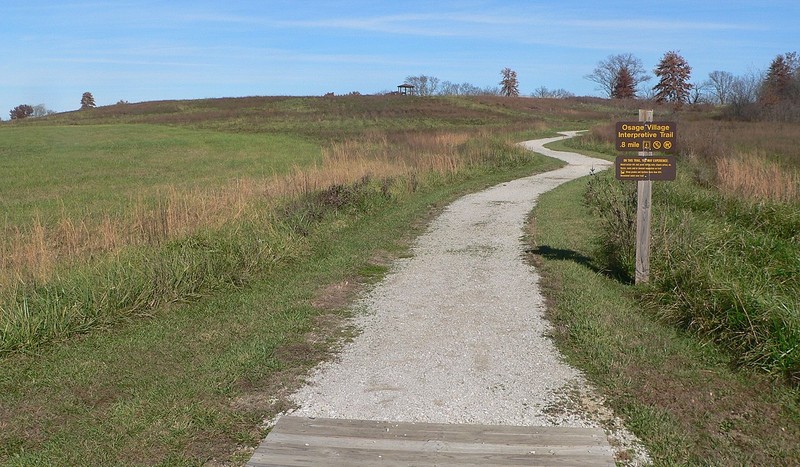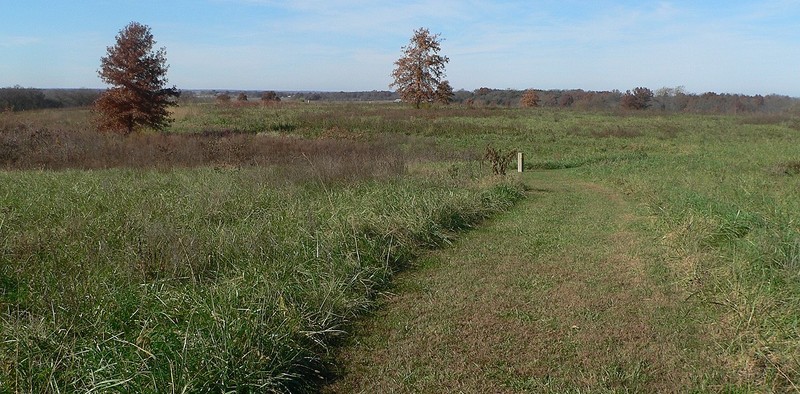Osage Village State Historic Site
Introduction
Text-to-speech Audio
Missouri's Osage Village State Historic Site preserves what was once a large Osage Indian village that was home to between two and three thousand people from 1700 to 1775. The Osage lived in around two hundred multi-family lodges, and visitors can learn about their lives and culture as they walk on an interpretive trail that includes interpretive signs that describe various aspects of the site's history. The site s also home to Blue Mound, an earthen mound that is believed to contain the burials of several chiefs. The site was added to the National Register of Historic Places in 1971.
Images
Around 2,000 to 3,000 Osage Indians lived in a large village at this location from 1700 to 1775. Known as the Osage Village State Historic Site, the site features a short interpretive trail, large mound, and kiosk. Inhabitants lived in around 200 lodges and grew corn, squash, and beans. They also ate fish, fruits, and a variety of game.



Backstory and Context
Text-to-speech Audio
The first European to encounter the village was a French man by the name of Charles du Tisne, who passed by it in 1719 on route to meet with the Pawnee Indians to negotiate peace. Over the course of the following decades, the Osage would come to control a vast area that included Missouri, Arkansas, eastern Kansas and Oklahoma. They traded with Europeans and from the late 1700s to the early 1800s supplied more than half of the furs from the Missouri River. The inhabitants of the Osage village site grew corn, squash, and beans, and hunted a variety of game including deer and bison. They ate fruit and fish as well.
University of Missouri archaeologist Carl Chapman confirmed the existence of the Osage village site in 1941. Excavations were conducted in the coming years that uncovered pottery, weapons, tools, and evidence for the houses, which were rectangular in shape and 30-50 feet long and 15-20 feet wide. The Archaeological Conservancy bought the property in 1981 and sold it to the state Department of Natural Resources three years later. The kiosk and its interpretive panels were added in 2021.
Sources
"General Information." Missouri State Parks. Accessed June 10, 2022. https://mostateparks.com/page/54990/general-information.
"Osage Village State Historic Site unveils new interpretative panels and exhibits Sept. 25." September 25, 2021. https://dnr.mo.gov/communications/news/osage-village-state-historic-site-unveils-new-interpretative-panels-exhibits-sept-25.
All images via Wikimedia Commons: https://commons.wikimedia.org/wiki/Category:Osage_Village_State_Historical_Site
